As winner of numerous international awards, Bruschi Spa is known for its innovative approach in design and technology. We are glad to share our insights and experiences with the industry members.
Zamak components for household appliances: advantages and case studies
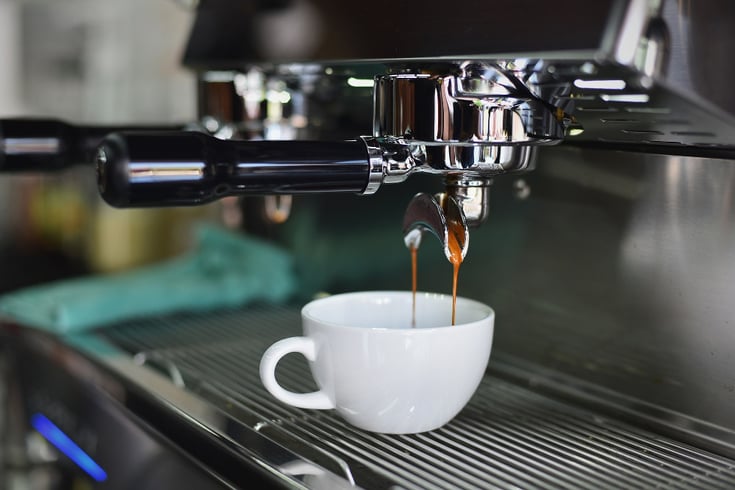
The versatility of zinc alloys can be tested in some sectors more than in others. A sector that offers great creative and design freedom is household appliances: in fact Zamak components for household appliances contribute to make the entire object unique, exclusive and immediately recognizable.
The necessary premise to obtain Zamak components for household appliances able to become an added value for the entire object is the creation of a relationship of understanding and trust between the die caster and the producer of appliances. In fact, only through the mutual exchange of expertise and knowledge it is possible to achieve optimal results, able to meet not only the customer’s requirements, but also the expectations of the final consumer.If you want to learn more about saving opportunities connected with the choice of the right die casting supplier we suggest you to read the post How the right die casting supplier can help your company's VAVE.
Advantages of Zamak components for household appliances
In the first part of this article we are analyzing the main advantages that result from the choice of zinc alloys for household appliances components with an eye to the needs of the household appliances producer and to the expectations of the final consumer. Thereafter we will present some brief case studies able to illustrate the processes and the strategic choices that have been adopted in order to obtain optimized products.
The advantages on the side of the household appliances producer that will be considered are:
- Co-design
- Functional beauty
- Design freedom
- Freedom of superficial treatments
- Finishing and assembly
- Cost reduction
From the final consumer side we will consider the value added by zinc component in a household appliance in these regards:
- Appearance, quality, resistance
- Cleaning
- Recyclability
Advantages from the producer’s point of view
There are many advantages on the producer side, for some of them we will offer a more complete analysis while for others we will just discuss some details, providing indications on where to find articles that address these subjects more in detail.
Co-design
As anticipated, it is only through a relationship of understanding and trust that it is possible to question established methods and procedures in order to define new ones able to lead to an optimization of processes and products. To establish such a relationship it is necessary to choose a supplier of Zamak components for household appliances with the competences, the experience and the knowledge necessary to undertake, together with the customer, the co-design process. In fact the right supplier will be able to work on the design of the component suggesting optimization strategies for molds and filling flows, shapes and walls able to lead to the creation of unique and exclusive products.
To discover some of the co-design strategies that it is possible to implement to reduce weight, and as a consequence costs, of household appliances we suggest to read Weight reduction for white goods industry.
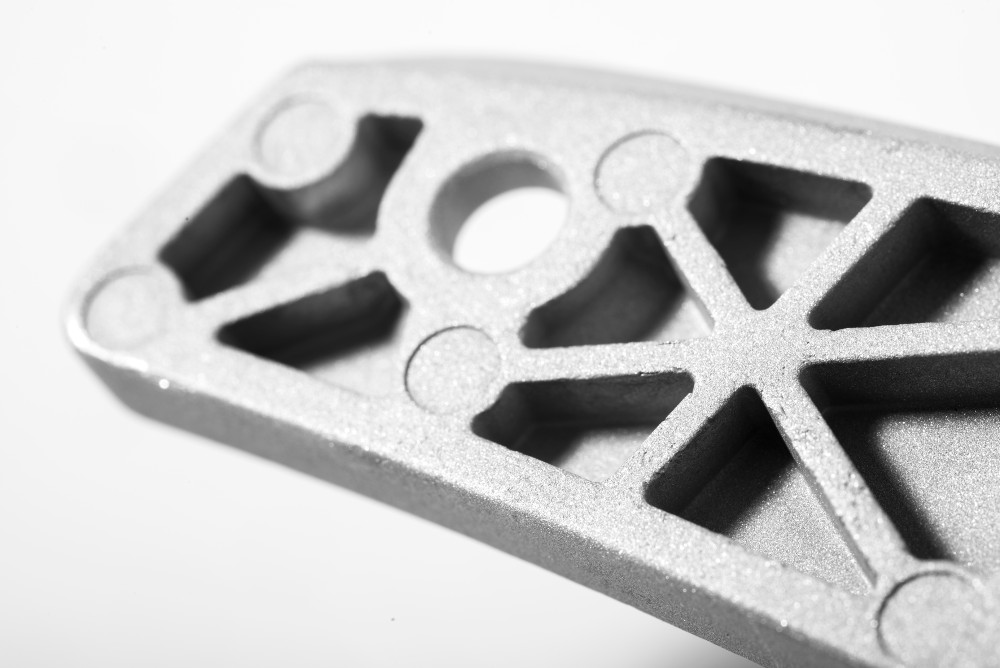
Functional beauty
The co-design process shall be led by the principle of functional beauty, which is the removal of unnecessary details aimed at improving the aesthetical qualities of the functional parts.
The achievement of functional beauty is synonym of true collaboration between designers and manufacturers, in fact it implies a joint and targeted action that allows the obtainment of results able to satisfy both sides.
To achieve functional beauty, thanks to the synergy achieved during the co-design phase, it is necessary to put at the core of the process the coexistence of functional and aesthetical elements without forgetting that, to obtain really valid results, it is necessary to consider options compliant with the die casting productive process.
In the article Functional beauty: the case of Nespresso KitchenAid Artisan 5KES0503 it is possible to find a more detailed definition of functional beauty and its exemplification through a case study.
Design freedom
Functional beauty and co-design are tools that help the producer of household appliances to obtain products able to meet his or her requirements. However, both the hot chamber die casting technology and the choice of zinc alloys allow a great design freedom. In fact through the die casting process it is possible to obtain complex and articulate shapes with very thin walls that allow the creation of unique components and customized details and shapes.
Freedom of superficial treatments
The surface of zinc alloys die casts is particularly suitable for superficial treatments and finishing. In fact components can undergo various kinds of treatments in order to achieve an external appearance that is appealing and customized according to the requests of the customer. These treatments are, for example, chrome plating, powder coating and liquid painting. Moreover, the advantage given by this kind of treatments is not only aesthetical but it results also in an augmented superficial resistance of the products, and, for extension, of their life time.
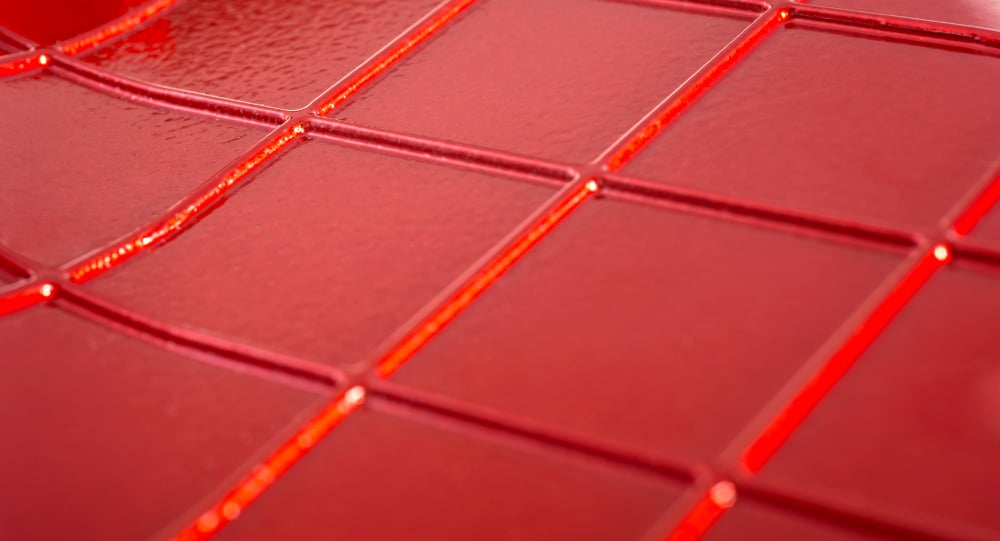
Finishing and assembly
Thanks to the introduction of automation, anthropomorphic robots and ad hoc realized machineries it is possible to automate a great number of secondary operations, such as assembly and finishing, and of quality control. The possibility to undertake these operations with a reduced contribution of personnel allows the customer to obtain ready-to-use components at a competitive price and with a reduced cycle time. Moreover, the development of automations and ad hoc machineries allows quality and compliance controls to be done quickly and in exemption from the risk of human error with a noticeable decrease of returns due to not compliance.
Costs reduction
Beyond the saving opportunities allowed by automation and accuracy in designing the mold and the filling flows, it is important to underline also the cost effectiveness resulting from the choice of zinc as raw material for the creation of die casts.
In fact zinc alloys are different from other metals or metallic alloys for their competitiveness in costs and production times. Zinc alloys do not require high temperatures to melt and, as a consequence, also the cooling times result reduced. These factors, in their turn, mean a cycle time that is short if compared to the one of other metals and in an increase of the productive capacity of the plant.
Zinc can be competitive also in comparison to plastic materials: for example, to obtain the stiffness and resistance of zinc, plastics have to be reinforced with glass fiber or with special polymers with a resulting increase of the costs for the material.
Advantages from the customer’s point of view
Customer experience is what the customer feels when approaching to a product. In defining the quality of this relationship there are a number of variables connected to the actual situation, but also to consumption and market trends. Specifically, for the relationship between the user and the appliance some important factors are: the performance of the product, its usefulness, appearance, texture, resistance, the global perception of the object and its alignment, or misalignment, to consumption trends.
Let’s now analyze some relevant factors, able to influence the customer experience for a home appliance and to determine the perception of value and quality of the object.
Appearance, quality, resistance
Zamak components for household appliances are able to convey good visual and tactile sensations. From a visual point of view an element made of zinc, which is coated or chromed, distinguishes itself from the rest of the body of the appliance resulting in a prominent and valuable element. Also from a tactile point of view a metal functional element gives feelings of greater reliability and resistance in comparison to the same component made of plastic. In this way it is possible to obtain a differential advantage given by the visual and tactile feelings of the user that result in a perception of value.
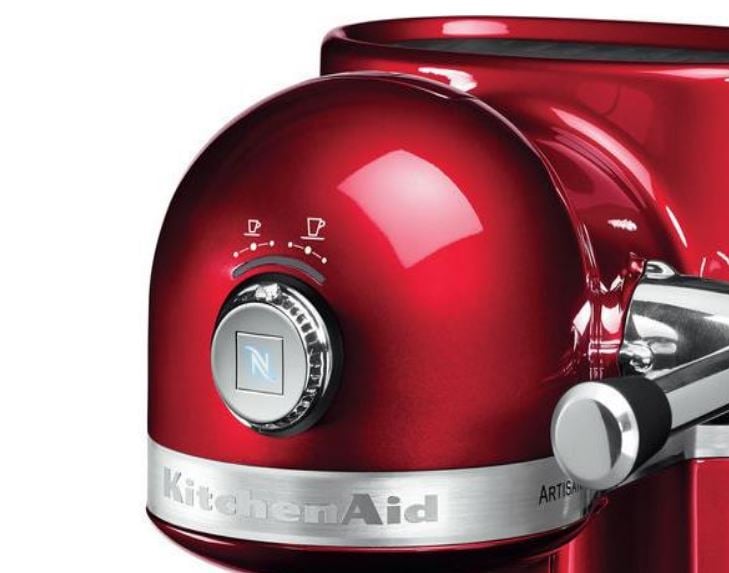
Cleaning
On the customer side an important aspect when choosing an appliance is the easiness of cleaning. To clean chromed zinc is easier than to clean other surfaces: the metal has an hard and smooth surface that lends itself well to be polished and on which it is easy to find, and to remove, stains and rings. The added value determined by an appliance that is easy to clean is not only aesthetical because, in this case, also cleaning variables intervenes, which are particularly important if the object is intended for the treatment of food.
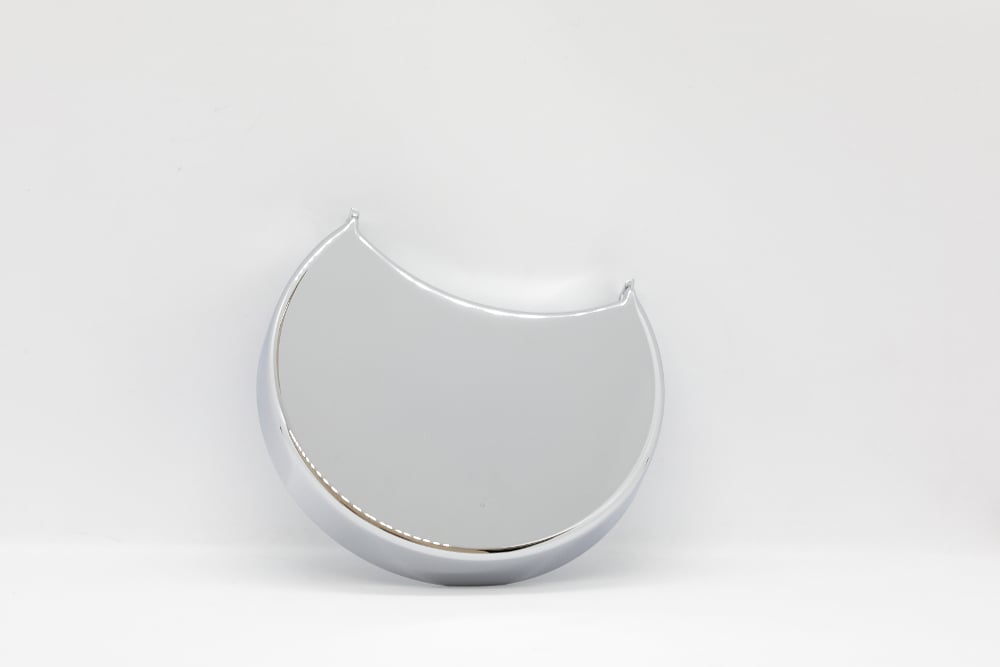
Recyclability
In the last few years, consumers gained an always greater awareness in matter of environmental sustainability and recycle. The search for easily disposable products and with little environmental footprint has been able to modify markets that were solid and it caused changes in sales and supply chains. Household appliances, characterized by a quite long life time are an excellent source of recyclable materials. Zinc is a valuable material that offers the possibility to be recycled repeatedly and that allows C2C productive practice, namely the kind of production that from the beginning establishes the re-employment of the used materials. Therefore, for the consumer, choosing household appliances with zinc components proves to be a guarantee of recyclability and eco-friendly practices.
To know more about the advantages connected to recyclability in the production of Zamak components for household appliances we suggest you to read White goods: improving sales through sustainable choices.
Case studies
The household appliances with Zamak components can be large or small and intended for professional or domestic use.
Below we present three case studies, the first one is about a small coffee machine intended for the consumer market, the second one is about a professional coffee machine and the third one is about a component for white goods such as the hinge for washing machines.
Appliance for domestic use: coffee machine
Among the zinc alloy components for household appliances we would like to focus on a component of the coffee machine: the cup support, a functional component with a primary aesthetic quality.
The optimization of this product started with a PDCA study that made it possible to consider and to analyze all the phases of the process and to undertake the actions necessary to optimize it.
Thanks to the study it has been possible to identify the appropriate parameters for the regulation of the fusion and for the filling of the mold and the time intervals necessary to optimally complete the productive process. Thanks to the results of the analyses conducted during the simulation phase it has been possible to estimate the changes in the superficial quality and the cycle time variations depending on the temperatures of the mold.
Moreover, thanks to the results of the study, it has been possible to focus the attention on the most value adding actions to the entire productive process: this way it has been decided to make the production more effective with the introduction of an automation dedicated to the processing of the components.
In particular the automation concerned the superficial treatment of the cup support, a component that, due to its particular shape, could not undergo processing of the internal surface before chroming phase. For this reason it has been identified a mold filling that allowed the reduction to zero of the faults in the not workable part. Furthermore, already during the die casting phase, a superficial roughness such as to allow a good result of the subsequent chroming treatment was obtained.
To deepen this subject we suggest you to read the article Zinc Die Casting for small appliances: components for coffee machines and to watch the video Die casting for household appliances: coffee machines
It is possible to gather more information on the future development of the coffee machines market reading the article Using zinc in die casting for smart coffee makers.
Appliance for professional use: coffee machine
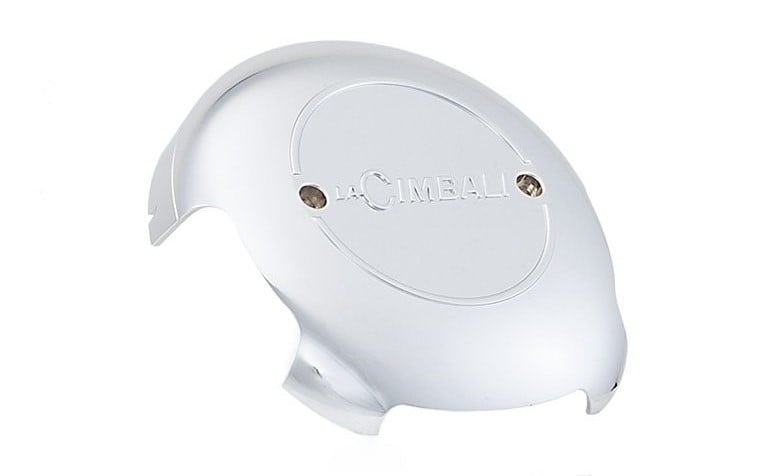
Professional appliances have to meet the expectations of the workers that use them daily and of the consumers of the service made possible by the appliance.
The professional coffee machine we are discussing in this case study is an example of the above mentioned situation: the appliance has to be considered efficient by the professional but it also has to give the same impression to the less expert eye of the customers.
A challenge, in manufacturing components for this product, has been to realize a chromed wall with the name of the appliances brand imprinted on the surface.
The obtainment of a writing in relief directly during die casting does not allow the component to undergo the polishing operations that components to be chromed usually undergo. For this reason it has been implemented a strategy aimed at obtaining a surface suitable to be chromed right after die casting. Studies conducted with special simulation software allowed the right injection and outlet points to be found and to be moved to the internal wall of the component in order not to affect the surface quality. Moreover, filling flows have been optimized to obtain a surface without air inclusions and porosity and the vacuum valve allowed a further reduction of these faults bringing the scrap rate close to zero.
Only zinc could have allowed this result: with other materials such a thin relief and a superficial quality such as to guarantee an excellent result of the galvanic treatment without previous preparations could have not been obtained.
On International Zinc Association website it is possible to read a data sheet of this product with a brief description of the optimization process undertaken for its components.
White goods: washing machine
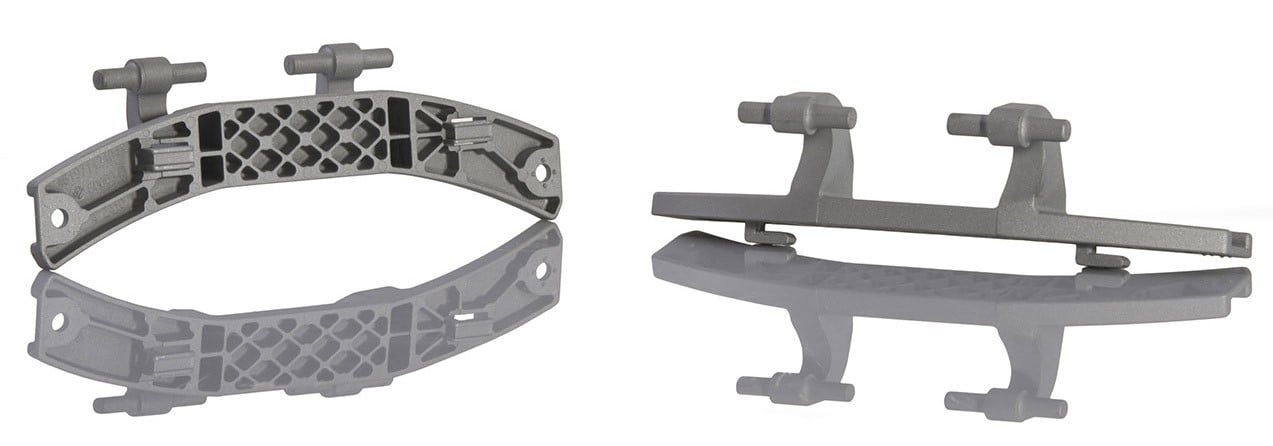
The hinges for the washing machine porthole are a functional component that can be produced in zinc. An interesting aspect, related to the realization of this product, is the necessity to assemble plastic bushings on the die cast. To optimize this productive process it has been found the solution to design an automation able to perform the necessary semi-automatic assembly operations. Thanks to the system controlled remotely by PLC it is possible to place the hinges in different positions according to the version to be assembled. The introduction of this automation allowed the reduction of the cycle time and of the manual contribution of the operator with a consequent cost reduction. Moreover, automation has allowed precise outputs to be obtained, compliant with high qualitative standards.
For more information and to watch the machine for the semi-automatic assembly in action watch the video Bruschi – Die casting for household appliances: hinge for washing machines.
These are just some of the components for household appliances that it is possible to produce in Zamak, in fact, as mentioned above, the great versatility of the material allow a wide range of solutions to be created.
To always be up-to-date with die casting industry, subscribe to our blog.
